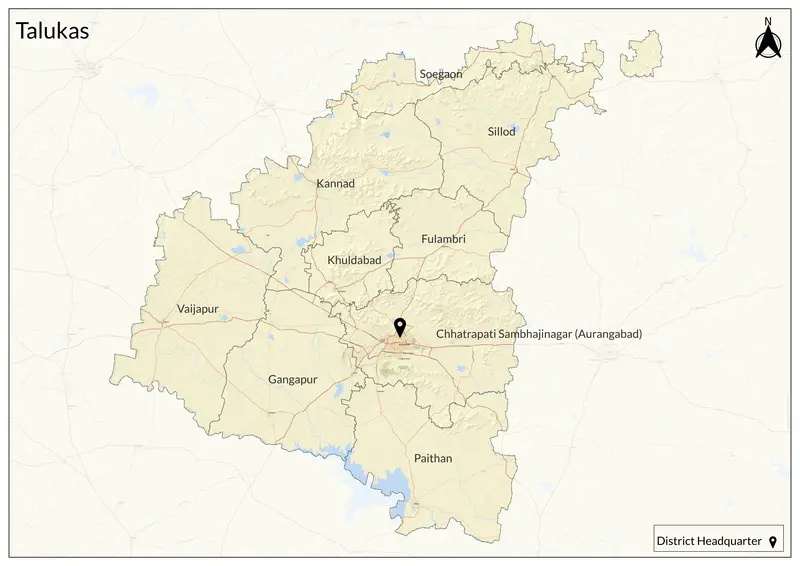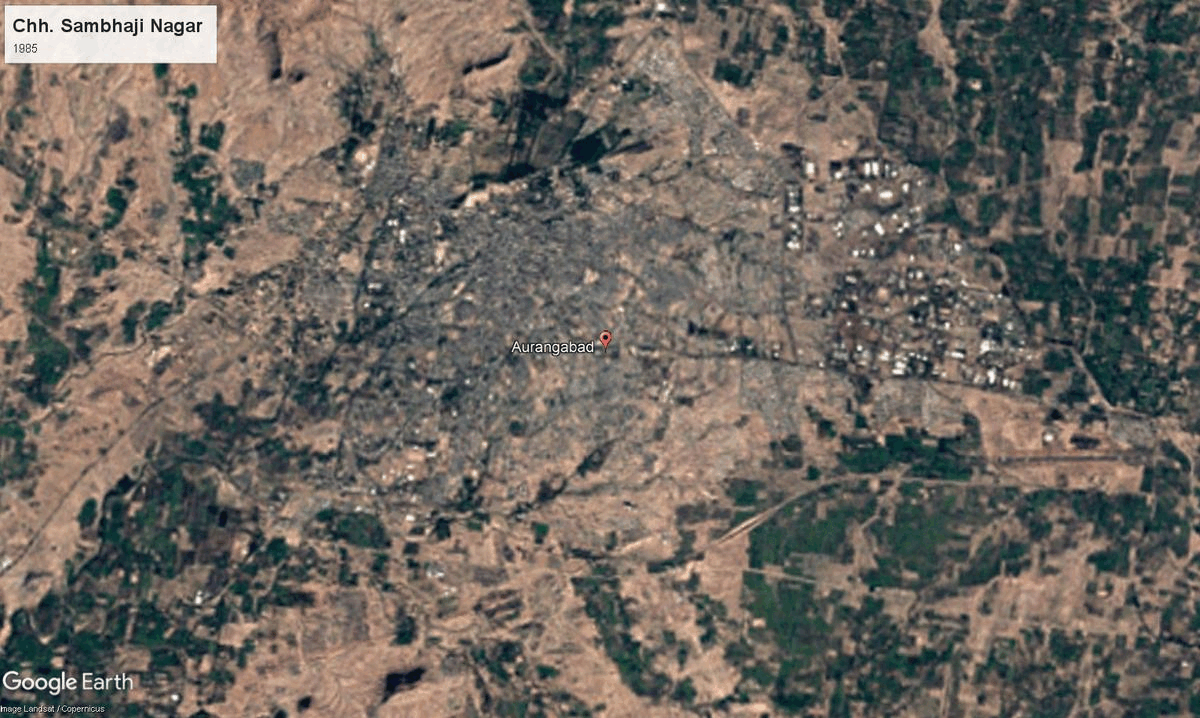Chh. Sambhaji Nagar

10,110 sq. km
~40.40 lakh (2019)
917 (2011)
~ ₹57,804 crore (2019)
~ ₹1.43 lakh (2019)
Aurangabad, now known as Chhatrapati Sambhajinagar, is divided into nine talukas: Kannad, Soyagaon, Sillod, Phulambri, Aurangabad, Khuldabad, Vaijapur, Gangapur, and Paithan. It borders Nashik, Jalgaon, Jalna, and Ahmednagar. Historically, Aurangabad was ruled by the Satavahanas, Vakatakas, Chalukyas, and Rashtrakutas before becoming part of the Hyderabad State under the Nizams. After India gained independence, it was integrated into Maharashtrawhen the state was formed in 1960. The district was named Aurangabad after Mughal Emperor Aurangzeb but was renamed Chhatrapati Sambhajinagar to honor Chhatrapati Sambhaji Maharaj in 2022.
The district is known for its Ajanta and Ellora Caves, both recognized as UNESCO World Heritage Sites for their stunning rock-cut architecture and Buddhist art. The Ajanta Caves form a celebrated complex of 30 Buddhist rock-cut monuments built by the Satavahana, Vakataka, and Chalukya dynasties between the 2nd and 5th centuries CE. The Ellora Caves comprise 34 caves dating from the 5th to 10th centuries CE, created under the Rashtrakuta Dynasty, and showcase Buddhist, Hindu, and Jain traditions. Then there are Aurangabad Caves containing 12 Buddhist caves from the 3rd century CE and display Tantric influences in their icons and architectural style. The city is also called the "City of Gates" due to its 52 historical gates but during the Mughal era. The district is also known for its Paithani sarees, Himroo fabrics, and Naan Qalia cuisine. Notably, the district houses Grishneshwar Temple, one of the 12 Jytirlingas in India, as well as Kachner Jain Temple. Culturally, the district also draws extensively from that of Hyderabad princely state.
The Paithani sarees come from the place Paithan (Pratishthana), the imperial capital of the Satavahana dynasty (1st century BCE–2nd century CE). This region was also spanned across Devagiri (Daulatabad), the capital of the Yadava dynasty (9th–14th century CE). Notably, Daulatabad was also the brief capital of Delhi Sultanate ruler Muhammad bin Tughlaq, who ordered his capital to be shifted from Delhi, also lies in present-day Chh. Sambhajinagar.
The district has changed many hands. In 1610, Malik Ambar, an Ethiopian former slave who became prime minister of the Ahmadnagar Sultanate, founded the city of Khadki as the capital. His son Fateh Khan renamed it Fatehnagar. The city was annexed by Aurangzeb and renamed Aurangabad, which he made the Mughal capital of the Deccan region in 1653. In 1724, Nizam Asaf Jah I established the State of Hyderabad with its capital initially at Aurangabad, later moving it to Hyderabad in 1763. Under the British Raj, Hyderabad became a princely state, with Aurangabad remaining part of it until 1956, when it joined Maharashtra’s Marathwada region.
Chhatrapati Sambhajinagar is located in the Godavari River Basin and partly in the Tapti River Basin. The major rivers in Aurangabad District are the Godavari, Purna, Shivana, and Kham rivers. It lies on the Deccan Plateau with basaltic lava flows from the Deccan Traps. The district has a varied elevation and experiences a tropical climate with seasonal rainfall.
Aurangabad is an example of balanced industrial development. Historically a center for silk and cotton, the city became known for Himroo textiles and Paithani silk saris. Industrial growth accelerated after the opening of the Hyderabad-Godavari Valley Railways in 1900 and the establishment of ginning factories. Following 1960, the Maharashtra Industrial Development Corporation set up major industrial estates, and new hubs like Waluj, Chikhalthana, and Shendra emerged. Today, Aurangabad hosts major manufacturing, biotechnology, pharmaceuticals, and automotive industries. Modern industrial development continues with the Shendra–Bidkin Industrial Park under the DMIC initiative.
